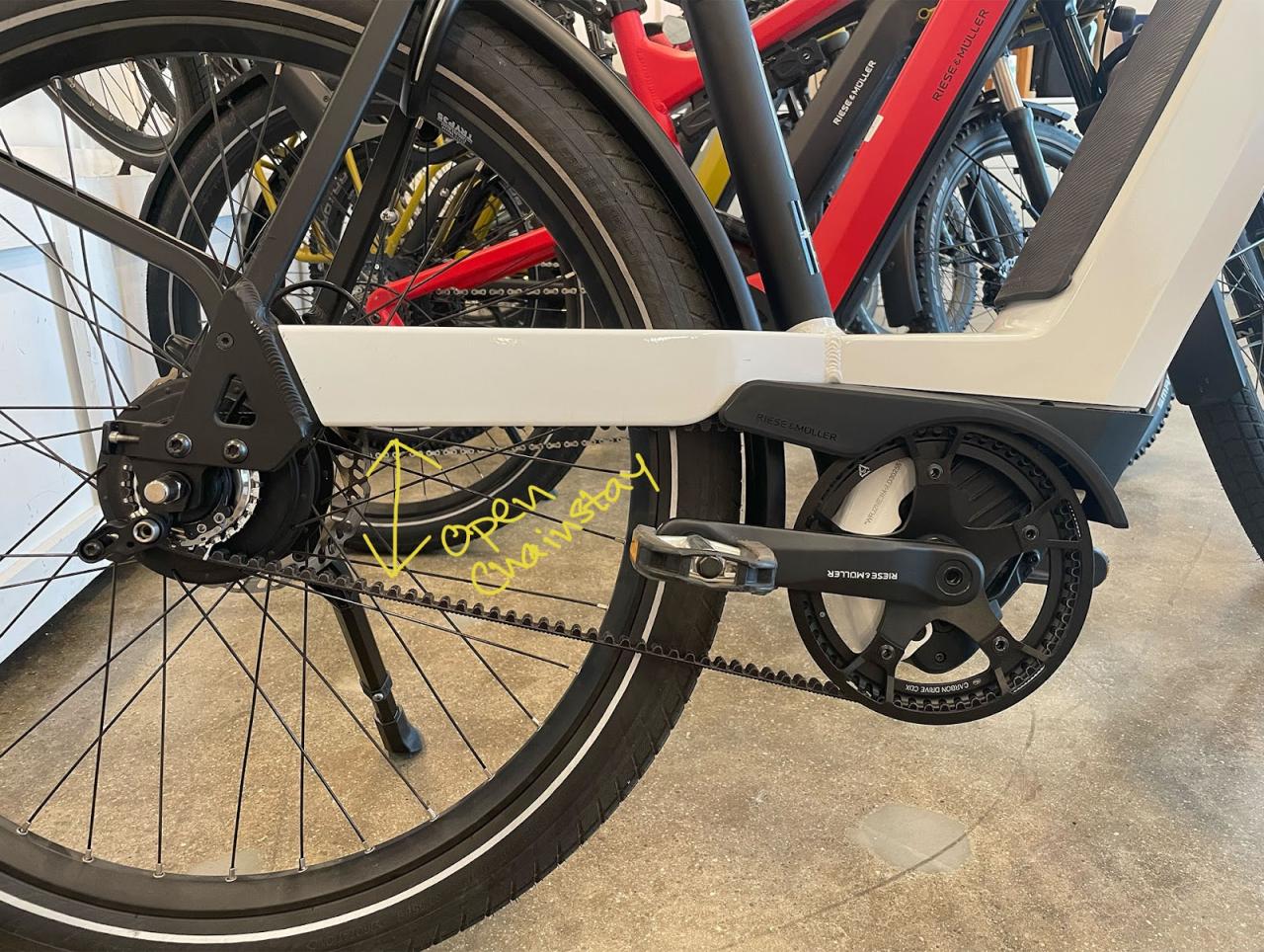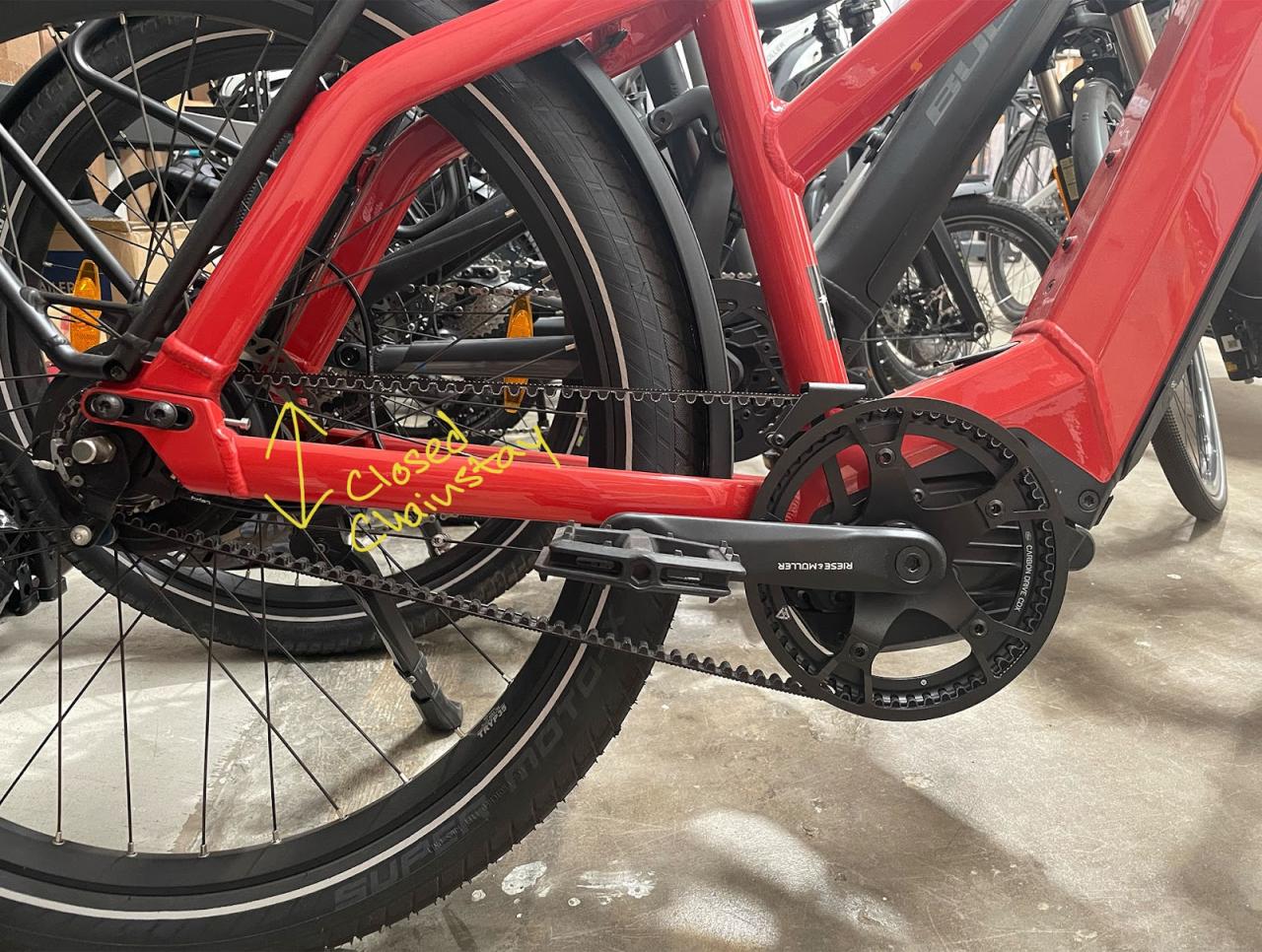Gone are the days of lubing your chain, getting your pant leg caught, and having to hear that grating sound of metal-on-metal as you ride, at least, for those who have converted to pedaling a belt-driven bike. For these reasons and then some, belt drives are being integrated into the lineups of more and more electric bike manufacturers, specifically many of the brands that Propel stands behind.
Whether you’re a fan of the tried and true traditional chain, contemplating whether a belt drive is right for you, or just want to know more, we’ve answered some of the most common questions we hear from our customers below.
What is a belt-drive and how does it differ from a traditional bike chain?
A belt drive is a toothed band made of nylon and carbon fiber strands. Introduced initially as a product for the auto industry, a belt drive in the bike world is an alternative to a standard bicycle chain. A few companies are manufacturing these, and there will surely be more popping up in the future. We work with Gates Carbon Drive, which we’ll be referencing throughout this article.
Steel chains need to be replaced due to stretch, wear, and lack of care before actual failure. Since belt drives don’t stretch and are easy to take care of, the Gates belt will perform smoothly and consistently throughout its life.
This is for a couple of reasons: Carbon fiber doesn’t stretch out over time, compared to the steel of a chain. It also doesn’t age or rust as quickly as steel can. In fact, carbon fiber doesn’t rust at all.
Belts are for anyone who doesn’t like the work or mess involved in keeping a chain alive. Whatever your discipline or purpose, an eBike with a belt drive can work for you!
Belt drives probably sound pretty nice by now, right? Let’s take a look at some of the pros and cons to get a better idea:
Pros
Easy to maintain: With no grease involved and just one solid moving part, belts are easy to keep in good shape. We will go over this in more detail below.
Lasts longer: Though Gates recommends regular inspection and replacement, belts are factory tested to last 2-3x longer than a steel chain.
Cleaner: Since a belt is one solid piece and there are no links or grease, cleaning a belt is a breeze.
Quieter: Steel chains rub on metal cogs. Metal rubbing on metal can make a grinding sound, especially if you haven’t greased the chain in a while.
Continues to work well over time: When a steel chain is stressed and used, eventually, the links begin to stretch out. Metal on metal also wears the teeth out on cogs a lot faster (about twice as slow as average). A belt is one solid part and made out of carbon fiber and nylon which prevents these things from happening as frequently.
Cons
More costly: When it comes to needing a belt replaced, it can get costly. A new belt is about $100 – $150, depending on size and availability (compared to a steel chain at around $20 – $50), and new cogs cost anywhere from $100- $200 apiece, depending on size and spline pattern. However, the extra cost tends to pay for itself, since you’re not spending as much time or money having to maintain it.
Not compatible with all bike frames: There must be a split in the chainstay on the frame (called a coupling break) or a frame design that elevates the chainstay above the path of the belt from the rear to the front sprocket, which eliminates the need for a split in the chainstay. In this design, the belt can be removed merely by removing the rear wheel in order to install a belt, since there is no break in the belt.

Elevated Chainstay

Coupling Brake on the rear triangle
Not compatible with an external derailleur: Since belts can’t sit at an angle, external derailleurs don’t work. Belts are only compatible with internal gear hubs, Pinion, and single speeds.
You can get stuck if something disastrous happens: Although the chances are slim, in the event your belt gets damaged or cracked during a ride, there’s nothing you can do to put it back together. Fingers crossed your ride home or to the car is all downhill from there!
[Note for Asia: thinking we can link the full article at the bottom of the page once posted. That way this can stay short and sweet]
